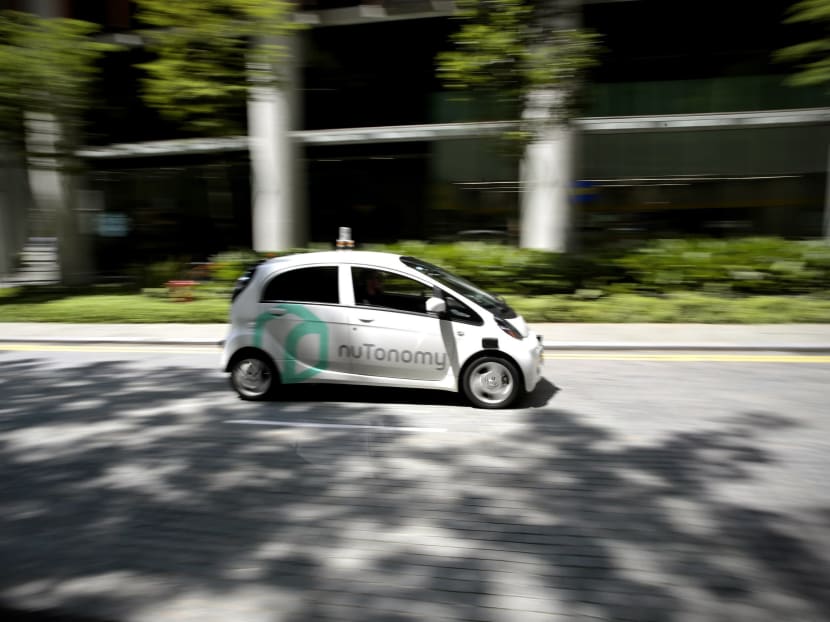Firm puts public trials of self-driving vehicles on hold after accident
SINGAPORE — The self-driving car which was involved in Tuesday’s (Oct 18) widely-reported accident with a lorry was undergoing a rehearsal when the mild collision happened as it was changing lanes — just a couple of minutes before a demonstration in front of about 50 delegates attending the Singapore International Transport Congress and Exhibition (SITCE) held at Suntec City.

A nuTonomy self driving car travels during a demonstration session on Sept 23, 2016. TODAY file photo
SINGAPORE — The self-driving car which was involved in Tuesday’s (Oct 18) widely-reported accident with a lorry was undergoing a rehearsal when the mild collision happened as it was changing lanes — just a couple of minutes before a demonstration in front of about 50 delegates attending the Singapore International Transport Congress and Exhibition (SITCE) held at Suntec City.
The demonstration went ahead but minus the portion intended to showcase a driverless car — developed by Singapore start-up nuTonomy — switching lanes smoothly, the company’s co-founder Emilio Frazzoli revealed on Wednesday. Speaking to TODAY on the sidelines of a panel discussion at the SITCE, Mr Frazzoli also said that his company's public trials at one-north, where the accident happened, have been suspended for “hopefully just a few days” while investigations take place.
Mr Frazzoli said Tuesday’s accident could not have happened at a worse timing. “We were redoing the same thing we have done a gazillion times since last April (when trials started in Singapore). And this one time, it was just a combination of factors that contributed to the accident,” he said. The speed of the driverless car was just 4 km/h when it collided with the lorry, Mr Frazzoli said, but the impact was enough to dent both vehicles.
He added that the company has “a pretty good idea” on the cause of the accident but he declined to elaborate, citing the ongoing probe. The company has handed over data logs and submitted a preliminary report to the Land Transport Authority (LTA).
During the panel discussion, Mr Frazzoli and representatives from other firms developing driverless technology also shared their experiences putting such cars on the roads.
In the eight days that Delphi Automotive Systems had undergone trials in one-north since late September, its driverless vehicle had “a few incidents whereby the car couldn’t merge lanes to take a left turn”, its technical director of automated driving Serge Lambermont told TODAY. The vehicle eventually managed to reroute itself, he added. On other occasions, it was able to return to the same spot and execute the manoeuvre with no trouble.
An audience member asked whether, in a hypothetical situation, a driverless car would be programmed to avoid hitting a child but end up colliding with a pole for instance. In response, Mr Frazzoli said: “In the absence of rules, people come up with their own rules and their priorities. And in our case, what we try to do is… we try to protect things that are squishy and small. So humans, we tend to avoid, we prefer to hit stationary things with respect to this case.”
Mr Niels de Boer, programme director at the Centre of Excellence for Testing & Research of Autonomous vehicles at Nanyang Technological University, added: “How did you get in the problem where the only way out is to get into an accident in the first place? Something has already gone bad beforehand… Laws of physics still applies (even with driverless vehicles). You will not be able to avoid every single accident.”








